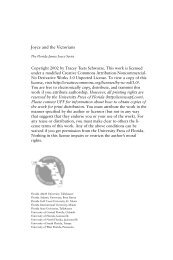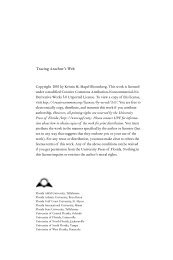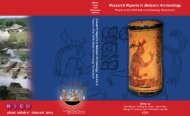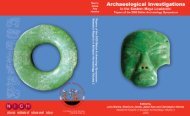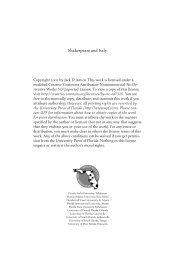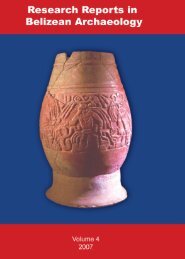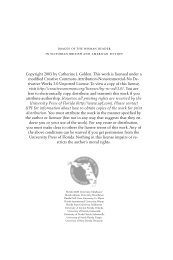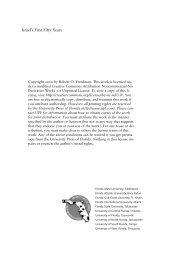Bernard Shaw's Remarkable Religion: A Faith That Fits the Facts
Bernard Shaw's Remarkable Religion: A Faith That Fits the Facts
Bernard Shaw's Remarkable Religion: A Faith That Fits the Facts
You also want an ePaper? Increase the reach of your titles
YUMPU automatically turns print PDFs into web optimized ePapers that Google loves.
216 <strong>Bernard</strong> Shaw’s <strong>Remarkable</strong> <strong>Religion</strong><br />
point, like a stretched rope when it snaps. And with <strong>the</strong> <strong>the</strong>ory of<br />
space-time as a structure of events . . . <strong>the</strong>re is no sort of reason for not<br />
regarding a percept as being in <strong>the</strong> head of <strong>the</strong> percipient. . . .<br />
It follows from this that what <strong>the</strong> physiologist sees when he examines<br />
a brain is in <strong>the</strong> physiologist, not in <strong>the</strong> brain he is examining.<br />
What is in <strong>the</strong> brain by <strong>the</strong> time <strong>the</strong> physiologist examines it if it is<br />
dead, I do not profess to know; but while its owner was alive, part, at<br />
least, of <strong>the</strong> contents of his brain consisted of his percepts, thoughts,<br />
and feelings. (Analysis of Matter 319–20)<br />
This leads us to an astounding conclusion: one of <strong>the</strong> most important initial<br />
observations about <strong>the</strong> nature of mind is that, at least in our waking<br />
states, <strong>the</strong> bulk of it consists of a model of <strong>the</strong> world outside our brains.<br />
Our senses collect data that are transported to our brain, an organ that uses<br />
that data to construct a model of <strong>the</strong> world about us. The material from<br />
which <strong>the</strong> model is fabricated is <strong>the</strong> stuff of consciousness. Naive realism is<br />
<strong>the</strong> confounding of that model with reality. The model is actually all we<br />
know, and <strong>the</strong> irony is that we know nothing about <strong>the</strong> stuff from which it<br />
is constructed. Literally, nothing.<br />
This is strong stuff for people who want certainty, because it seems to<br />
throw everything we have come to regard as most real and certain into<br />
hopeless doubt. The initial reaction of many is to reject it as a horrible<br />
doctrine. It is not so horrible if you can accept doubt and be satisfied with<br />
probability—which is supposed to be <strong>the</strong> way of science. A consideration<br />
of <strong>the</strong> careful, reasoned objections to this <strong>the</strong>ory show why this is so.<br />
Those objections are essentially of two types: that it leads to <strong>the</strong> hopeless<br />
absurdity of solipsism and that it demands <strong>the</strong> existence of a homunculus,<br />
which leads to an infinite regress. These are important arguments and will<br />
be addressed shortly. First, we should try to clarify, in more prosaic terms,<br />
just what Russell is saying.<br />
Imagine yourself <strong>the</strong> pilot of a strange science fiction vehicle which for<br />
some reason—say, because <strong>the</strong> terrain you must traverse is highly radioactive—has<br />
a cockpit deep inside a windowless chamber. You are able to control<br />
this conveyance because you are surrounded by television screens and<br />
speakers that provide you with a panoramic view of <strong>the</strong> outside of <strong>the</strong> craft.<br />
The accuracy is so great that you appear to be looking directly out windows.<br />
The television cameras that provide <strong>the</strong>se views are even controlled<br />
by <strong>the</strong> movements of your head so that as you move your view changes,<br />
just as with a real window. Suppose fur<strong>the</strong>r that some necessity of design



